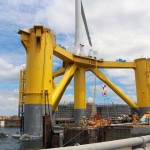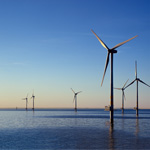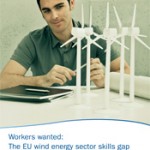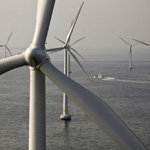EU offshore wind has a bright future, EWEA conference track chairs agree
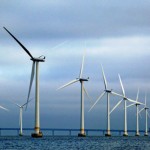 The next two years will be critical to further establishing and expanding the European offshore wind sector, especially in Britain and Germany, one of the track chairs at the recent offshore conference in Frankfurt said earlier this week.
The next two years will be critical to further establishing and expanding the European offshore wind sector, especially in Britain and Germany, one of the track chairs at the recent offshore conference in Frankfurt said earlier this week.
Dima Rifai, CEO of Paradigm Change Capital Partners in the UK, added a key area in the continued development of the offshore wind industry will be various ways that cost reduction can be realised across both the cost of technology and the cost of capital.
Rifai also said in an email interview that it will be interesting to see how offshore wind’s supply chain evolves and what effects local content requirements will have on the industry.
The finance track chair at the European Wind Energy Association’s Offshore conference in Germany three weeks ago, Rifai said an important message that came out of the financing sessions was that regulatory uncertainty is one of the main themes preoccupying both the industry and financial investor participants.
“We are still learning the risks in offshore wind and how to adjust for them,” she said. “As a result, there are few standardised ways to do things and each wind farm requires bespoke solutions which is an expensive way and time consuming process.”
But Rifai added that overall there is a will on the finance side to be involved in offshore wind and that many parties are studying the market seriously for an entry point.
Andrew Jamieson, CEO, Offshore Renewable Energy Catapult, UK, said there is a continuing call for political certainty across Europe especially regarding targets beyond 2020 that would give the market the confidence to scale up manufacturing.
As the track chair for the industrialising the supply chain sessions, Jamieson added that overall there was a strong sense at the conference that the offshore wind sector will indeed move forwards.
“What I [found] particularly interesting were the viewpoints of senior players starting to regard big projects as offshore power stations,” Jamieson said. “This means a lot to me in everything from how projects are thought about in design, procurement, construction and operation. It’s no longer elitist activity for wind experts but a strong industry for all power professionals.”
He also described the sector as an industry that will be here to stay and provide not just clean energy but jobs and economic value for decades.
Jesper Møller, the Head of Offshore Technologies for Siemens Wind Power, was the future technologies track chair.
Møller said that while the future of European offshore wind is bright, the sector needs to overcome cost challenges, which is tough but not impossible.
“Everybody needs to accept that this is not a high-margin industry but it is a healthy industry with many years of opportunities if we understand the need for simplifications,” he said.
“It is now clear to the industry that all players have to pitch in with cost savings on all areas. There is no chance that the turbine manufacturers can lift this challenge alone. A lot of focus on more cost-efficient foundations and simpler grid connection systems is necessary.”
Norbert Giese, Vice President of Offshore Development for REpower, was the markets, strategies and planning track chair at the recent conference.
Giese also believes that European offshore wind has a positive future.
“The main driver for the offshore wind industry during this decade will be Northwest Europe and the Baltic,” Giese said, predicting there will be additional offshore markets in the next decade.
More information about EWEA’s offshore conference and exhibition can be found here.







